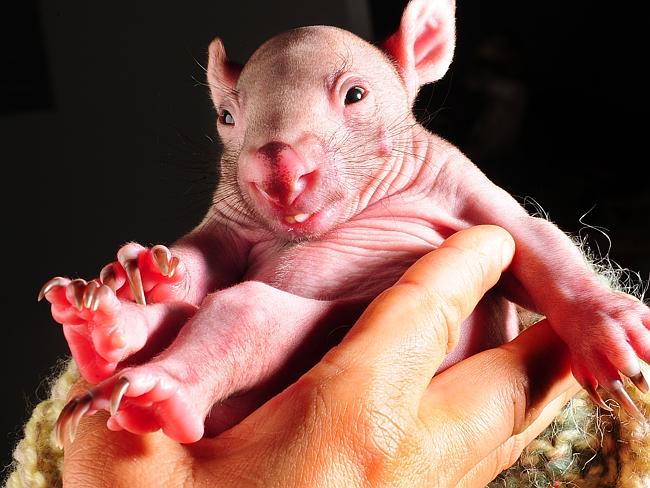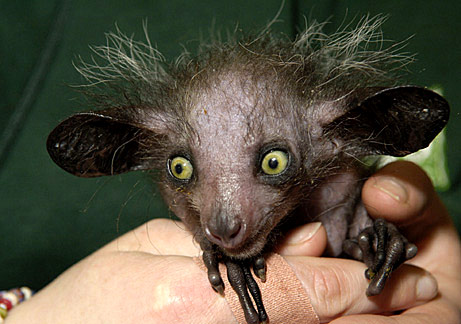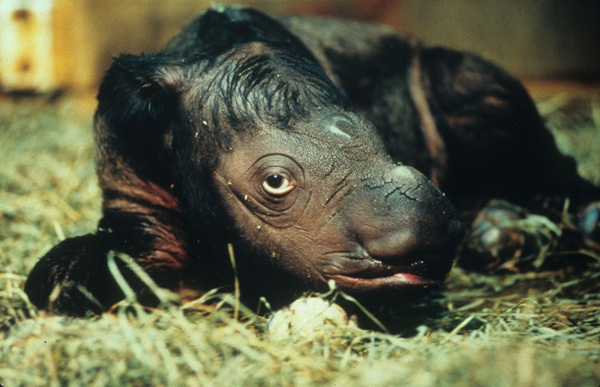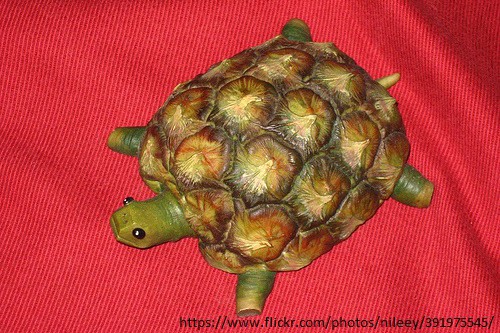As a wildlife vet, I feel there are some unique experiences that other occupations may not be able to offer. Sometimes it’s a funny experience, many times it’s a tough one, and most of the time it’s a very rewarding one. So here it is, my 6 personal experience being a wildlife vet:
1. You will become thick skinned eventually. Literally! Apart from bruises, bites, scratches and other injuries from the animals (not to mention I’ve been stepped on by a rhino, kicked by a peacock, ‘stabbed’ by a porcupine), please admit that you’ve pricked your fingers with medical needle or scalpel blade that you were holding! Yes, you’re definitely not the only one! If you are a qualified vet, vet nurse, or vet tech, I’m sure you’ve experienced that stupidity at least once in your life. If you are still a student and haven’t experienced it, be patient, that moment will eventually come 😉

Personal experience: A cat that I tried to inject suddenly jumped off the table and kicked my left hand. My left index finger landed nicely on a 24G needle connected to a syringe containing Ivermectin. If you know how painful Ivermectin is, I know you must have similar experience before.
Other’s experience: My friend’s vet cousin accidentally injected herself with Brucella while trying to vaccinate a cow.
2. No matter how ugly an animal is, you still think they are cute. Some animals can reach that certain point when ugliness meets cuteness. Cannot imagine? Please check this post of Gollum at #3 and Alien face at #6 who are part of my personal experience.
3. Co-workers think you are dumb. Everyone always have this superior personality and think they can do better than others. Sadly enough, it also happens to us and in our daily work life. As a vet at zoo or rescue center, we simply cannot check the health of hundreds or thousands of animals in a short period of time. We mostly rely on keepers to report any abnormalities and unfortunately they report when it’s too late. A dying animal comes, we try our best to save its life, but when we can’t, people think we’re dumb.
Personal experience: It was an emergency case. I injected a dying animal with adrenaline and doxapram but in the end it died. People who don’t understand may think the animal dies because of the ‘wrong drug’ I give.
I’m sure some vets have experienced similar situation as well. A dying animal comes, you inject emergency drug but can’t save them. Then the owner blames you for injecting wrong drugs that kill their beloved pets. Please raise your hand if it sounds familiar.
4. You still smile when a very ill animal bites you. I know it sounds crazy but it’s true. Seeing the transformation of a dying, hopeless, weak animal into a healthy (but aggressive) one is one of the biggest reward of being a vet.
Personal experience: a dying slow loris was brought into our rescue center that night. It didn’t have any energy to struggle when he put IV cathether into his vein. We had to hand feed him for the first few days because he couldn’t walk. After a few days he was able to eat by himself and after a few weeks he bit my thumb when I tried to grab him for treatment. A painful but sweet bite, a sign that he was recovering well.
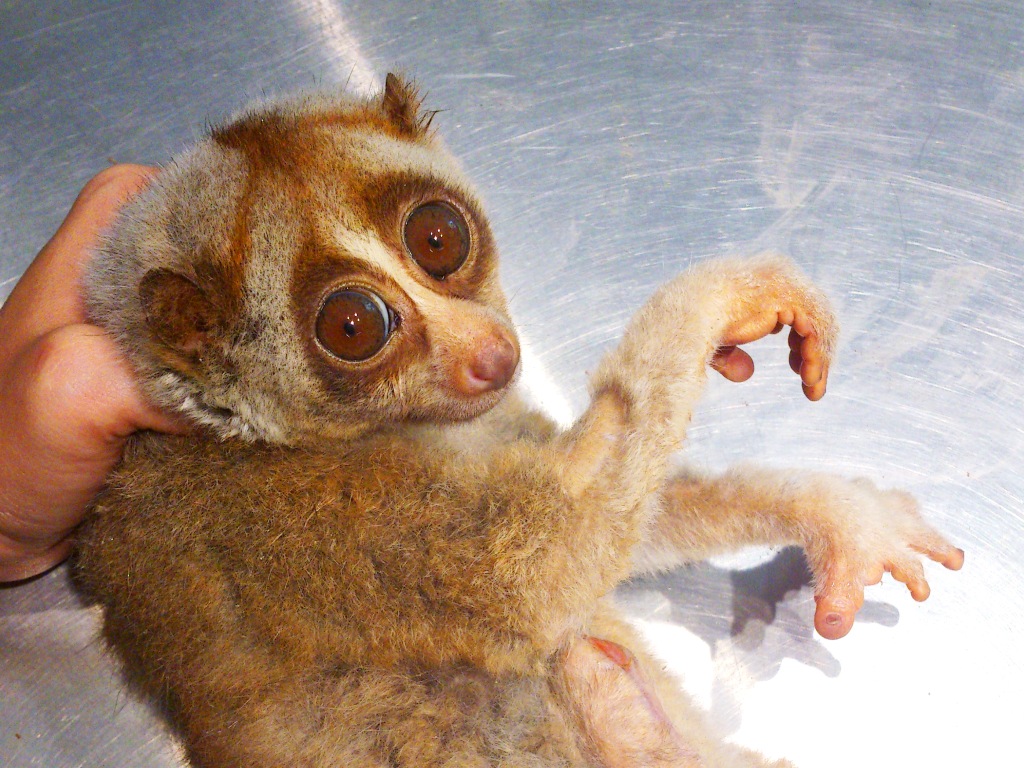
5. No matter how much you hate an animal, your heart cries when they are sick. This animal ignores you at first, then slowly chases you and constantly attacks you. He has hurt you so many times with his bite even though you don’t do anything to him. You slowly hate him for being so unfriendly to you. Sometimes you wish he was not your patient at all. But when he’s sick, you’re worried and still do your best for him.
Personal experience: There are 3 aggressive macaques who pulled half of my hair off my scalp when I was feeding them. They are not scared of anything and everyone is scared of them. Feeding them is already tough, left alone medicating these crazy boys. Why do they have to be here? Duh! Suddenly one day one of them was badly injured and I couldn’t neglect him. I still took care of him despite my spiteful feeling for him.
6. Your heart melts when you see a baby animal born. Regardless how tired you are, how much you dislike the aggressive and protective mother, how hot or cold the weather at that time, either raining or windy, your heart will melt when you see a newborn wildlife cuddling with their mom. Sounds cheesy but it’s so true. You’re not the mom, but all the blood, sweat and tears suddenly paid off.
Personal experience: I didn’t sleep for 36 hours waiting for a baby rhino to be born. That day, I was the grumpiest vet ever. However I smiled widely and was in tears when I saw him for the first time and suddenly my mood just changed completely.
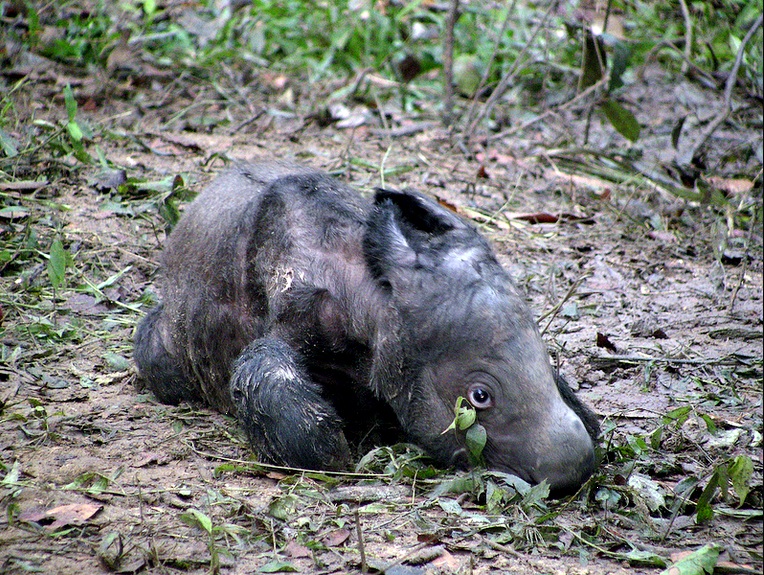
These are the 6 experience I can share you for now. Stay tune, I’ll update the second part next week. Keep calm and save animals 🙂






